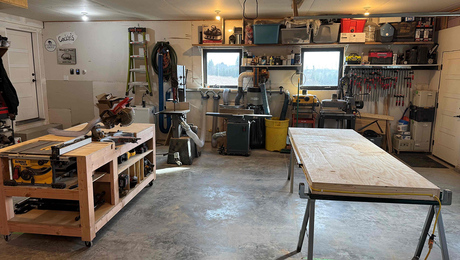Can anyone point me in the direction of independent verification for the claims made by the retailers of Retrofaom for insulting cavity walls in existing structures?
Discussion Forum
Discussion Forum
Up Next
Video Shorts
Featured Story

Listeners write in about running a profitable contracting business and ask questions about patching drywall, adding air barriers, and fixing a patio poured against the house.
Featured Video
Builder’s Advocate: An Interview With ViewrailHighlights
"I have learned so much thanks to the searchable articles on the FHB website. I can confidently say that I expect to be a life-long subscriber." - M.K.
Fine Homebuilding Magazine
- Home Group
- Antique Trader
- Arts & Crafts Homes
- Bank Note Reporter
- Cabin Life
- Cuisine at Home
- Fine Gardening
- Fine Woodworking
- Green Building Advisor
- Garden Gate
- Horticulture
- Keep Craft Alive
- Log Home Living
- Military Trader/Vehicles
- Numismatic News
- Numismaster
- Old Cars Weekly
- Old House Journal
- Period Homes
- Popular Woodworking
- Script
- ShopNotes
- Sports Collectors Digest
- Threads
- Timber Home Living
- Traditional Building
- Woodsmith
- World Coin News
- Writer's Digest


















Replies
Greetings Peder,
As a first time poster, Welcome to Breaktime.
This post, in response to your question, will bump the thread through the 'recent discussion' listing again which will increase it's viewing.
Perhaps it will catch someone's attention that can help you with advice.
Cheers
What kind of claims do they make?
Have you check the manfactures pages for independent lab tests or evalualtion reports.
.
A-holes. Hey every group has to have one. And I have been elected to be the one. I should make that my tagline.
They report architectural data on their site though what all of it means I'm not sure. I find it a little odd that a web search for retrofoam brings up little other than installer pages. Perhaps it is so new that there hasn't been much time for reports to appear on pages like this but I'd feel better about committing to it if contractors or inspectors reported on their experiences. For example, there is one homeowner who reports that water damaged interior paint and walls. Is this a substantial risk or the result of an installer who didn't adjust the mixing valves properly?
The product as described seems ideal for retrofit installations. Is that indeed the case?Dale
Last year in Detroit I used to hear their commercials on the radio all the time. Most of what I remember was how they didnt care what your walls were made of, when they were done the only way you'd know they were there would be by your lower bills.
I would first spend my money on a energy audit of the house. I did the retro foam thing. The installers were conscientious but I could tell they were not putting much material in because what I had was already pretty good. I should have done the audit thing first. If the auditor see's voids they can direct you to the best option.
In the case of the 1911 house that I want to improve, there is no insulation in the cavity walls - only lath and backplaster on the inner surface of the sheathing. High density cellulose would be an alternative but I can't get the local contractor to return calls. Sprayed in Icynene might also work but I worry about the number of leaks into electrical boxes and under baseboards. Then their is the matter of drilling a hole every 18" or so in every bay of the two-story house.If money were no object....but then, it always is.
i posted a reply on another thread about an old house that was gutted, and am wondering what is the estimate of the cost to do the retrofoam?
i wonder what it would cost to wrap the house with 2" insualtion board and reside?
like i said in the other post i think wrapping the whole house does a better job of eliminating thermal bridging, and a detailed how to was in jan-feb 2007 issue i think.